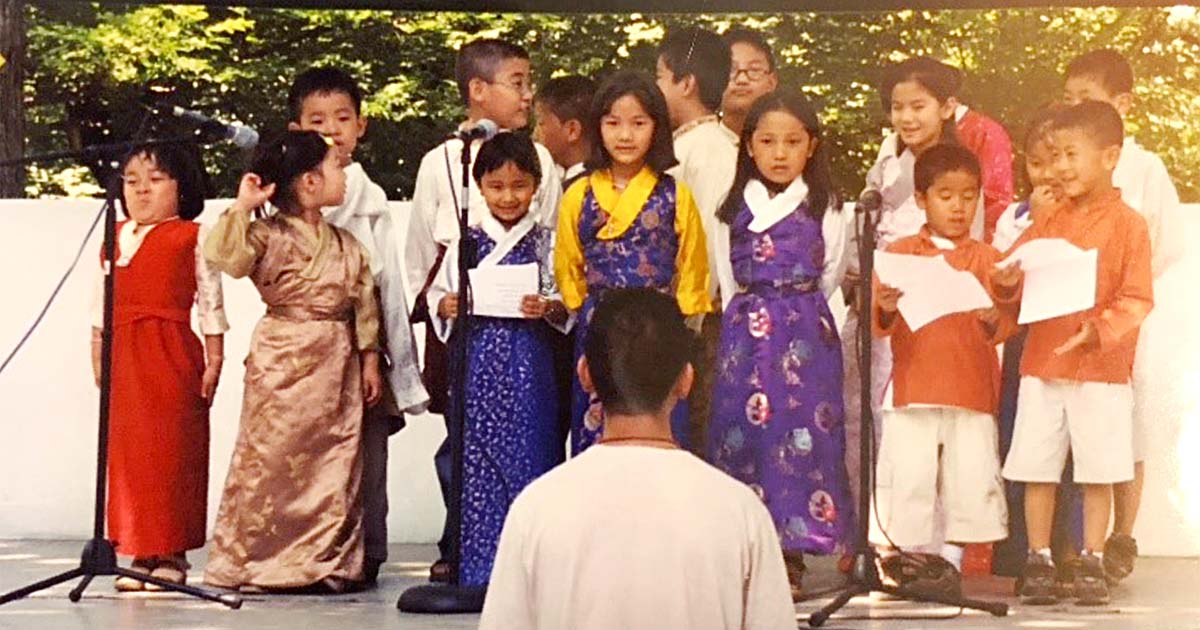I was born and raised in New York City by Tibetan refugees. My parents were born in Tibet, escaped to India in 1959, and ultimately immigrated to New York in the early 1990s. It’s a point of pride for me to share that I am a Tibetan, an American, and a New Yorker.
Growing up, the Tibetan community in New York was small. In the early 2000s, our Sunday Tibetan school was made up of a couple dozen students when my brothers and I first joined, and our apartment often served as a temporary home for newly arrived Tibetan friends navigating their first steps in this city. More and more, Tibetans began to leave India in pursuit of better opportunities in the west, and many of these Tibetans settled in New York City.
For as long as I can remember, our community would rent the basement of an Armenian church near 34th St for all our cultural and religious events. However, as our Tibetan community grew, so did a demand for a community space that was accessible to the majority. We settled on a property in Queens, and thus Phuntsok Deshe was established as the Tibetan Community Center of New York and New Jersey.

Students of the Tibetan Sunday School in the early 2000s.
Today, New York City is home to the largest number of Tibetans in the country. The Phuntsok Deshe Tibetan Community Center holds the Sunday Tibetan School, catering to over 500 students, and the two halls host all our religious and cultural events, including Trungkar Dhuchen (His Holiness’s birthday), prayer sessions, Tibetan school events, and Losar.
Losar, or Tibetan New Year (Lo = year, Sar = new), is a distinct Tibetan holiday that is based on a separate astrological calendar than the Lunar calendar, and it’s a holiday I look forward to every year. It’s a time where my entire family comes together to wear our newest Tibetan chubas (traditional Tibetan dress), consume Tibetan butter tea and dresil (a Tibetan dish consisting of rice, sugar, butter, raisins, and droma), and visit Tibetan temples for blessings – it’s a time for community to gather.
Early in 2024, Councilwoman Julie Won introduced the bill, “Suspension of alternate side parking regulations on Losar”, recognizing Losar on the city’s street-cleaning calendar – allowing residents to park that day without worries of receiving a ticket. Councilwoman Won’s office estimates there are 61,000 New Yorkers who celebrate Losar – “including Tibetans, Bhutanese, Highland Nepalese, Sikkimese, Mongolians, Monpas, and more.”
For someone like me, it isn’t just about having alternate side parking. I still don’t drive, and I probably won’t in the near future (“classic New Yorker,” some might say). However, this legislation isn’t about me. For many of my Tibetan and Himalayan community members – many of whom who are Uber, Lyft, and taxi drivers – this bill brings a sense of relief and recognition.
For decades, New York City has taken pride in being a melting pot of a myriad of cultures. Yet, representation in policy and legislation remains a powerful reminder of whose stories are seen and valued. Recognizing Losar in this way is not merely a practical accommodation, but a significant acknowledgment of communities like mine.
Celebrating our city’s diversity means uplifting the traditions, contributions, and voices of all its communities, and recognizing Losar through legislation on a citywide level is not just a win for Tibetans and the broader Himalayan diaspora – it is a testament to the strength and beauty of New York’s multicultural identity.
